|
Home Page
Glen Echo
The Town
Chautauqua
Amusement Park
• Post Cards
• Souvenirs
• Tickets
• Early Programs
Modern Times
History Book
Cabin John
The Town
The Hotel
Amusement Park
The Bridge
Legends
History Book
Great Falls
Post Cards
Other Stuff
Conduit Road
The Trolleys
Buildings
The Aqueduct
The Road
General
Capital Transit Passes
Historic item Trader
Minnie Brooke Postcards
|
The Cabin John Bridge Hotel
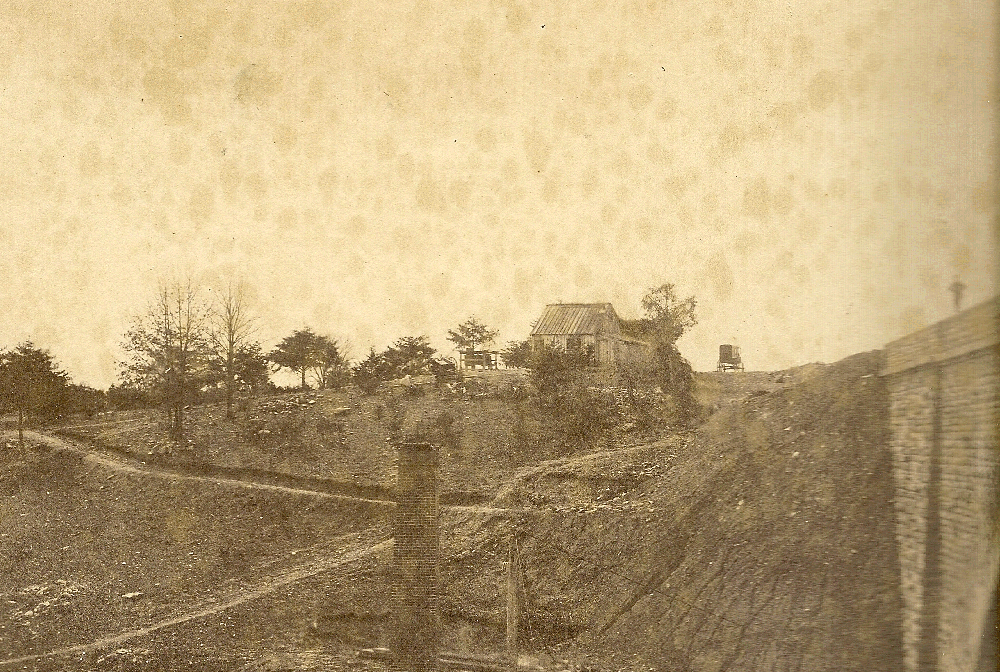
This shack at the end of the bridge sits on the location of the future hotel, it might have been where Rosa prepared meals, but this is speculation
The Cabin John Bridge Hotel
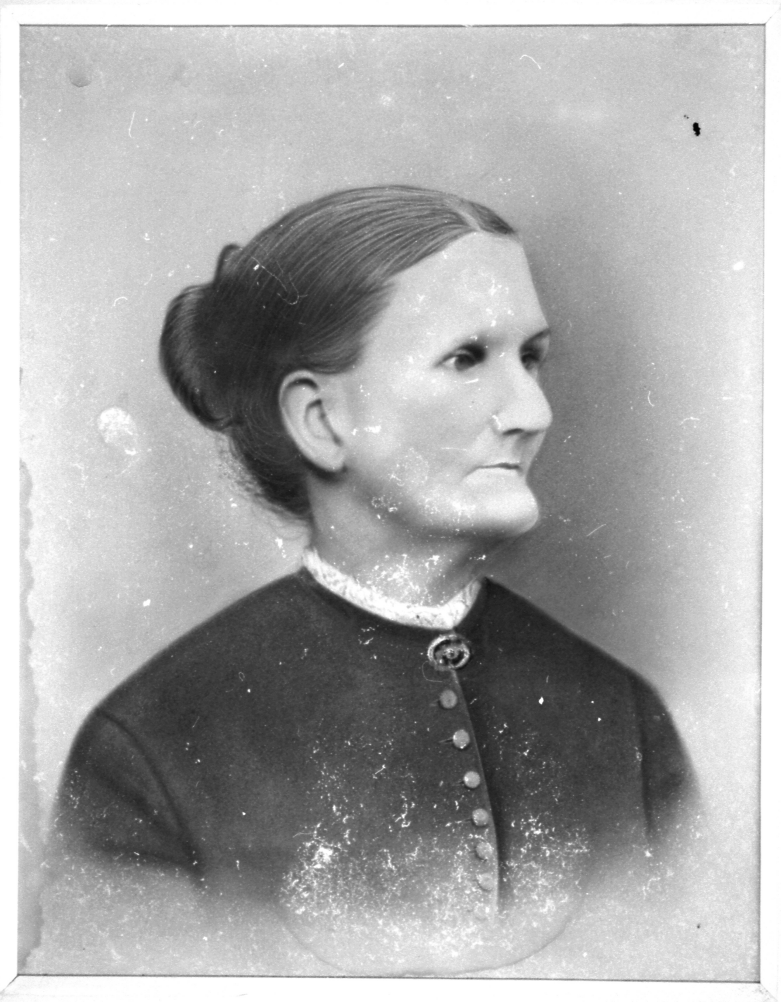
The only known picture of Rosa Bobinger, sadly no image of Joseph is known
The Cabin John Bridge Hotel
According to family lore Joseph Bobinger and his wife Rosa immigrated to America in 1854. They were both born in Germany, near the French border, upon arriving in the U.S. they settled in Philadelphia where there was a large German speaking population. Philadelphia was a major industrial city, a likely place for a professional stone-cutter to find work. In spite of this, Joseph apparently did not find adequate work in Philadelphia within his trade and other family stories indicate that he worked as a matre-de in a hotel in the city. Records from the year 1859 show Joseph living in the city.
In 1860 or 1861, Joseph relocated to the Washington D.C. area to work on the construction of the Washington Aqueduct. The aqueduct was advertising in the newspapers of all of the major eastern seaboard cities for skilled stone workers. While Joseph worked on the aqueduct and on the Cabin John bridge, his wife Rosa made extra money selling sandwiches, drinks, tobacco and cigars to the aqueduct construction workers. Over time she began selling complete meals as well.
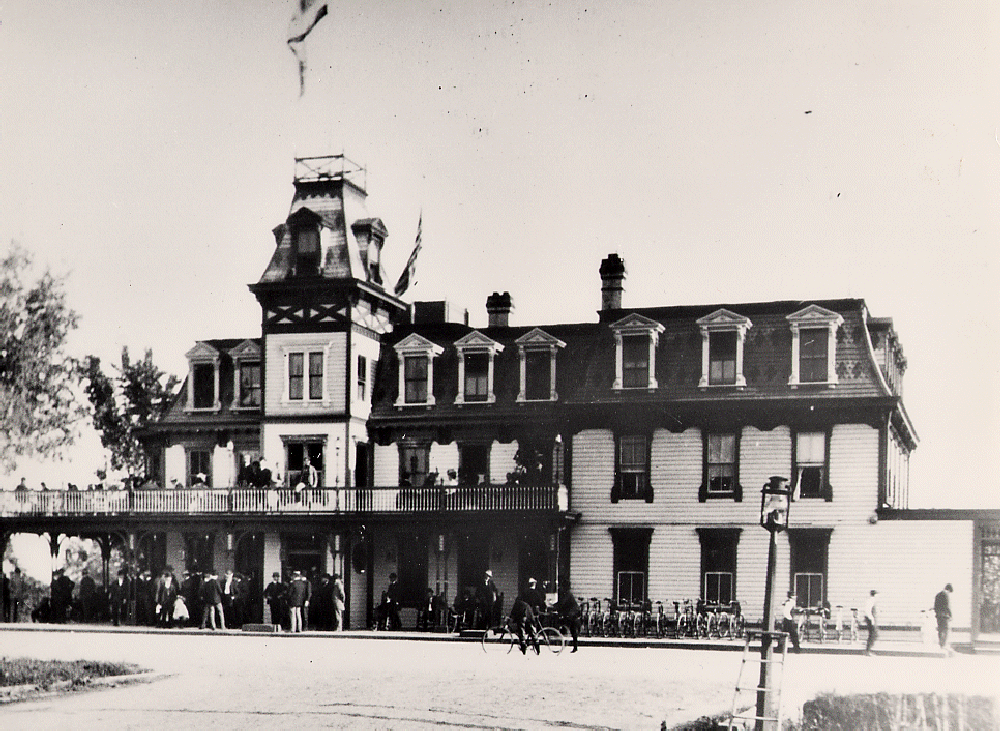
This image shows how the hotel looked in the 1870's (the image is from about 1888, but the hotel changed little during this period)
The Cabin John Bridge Hotel
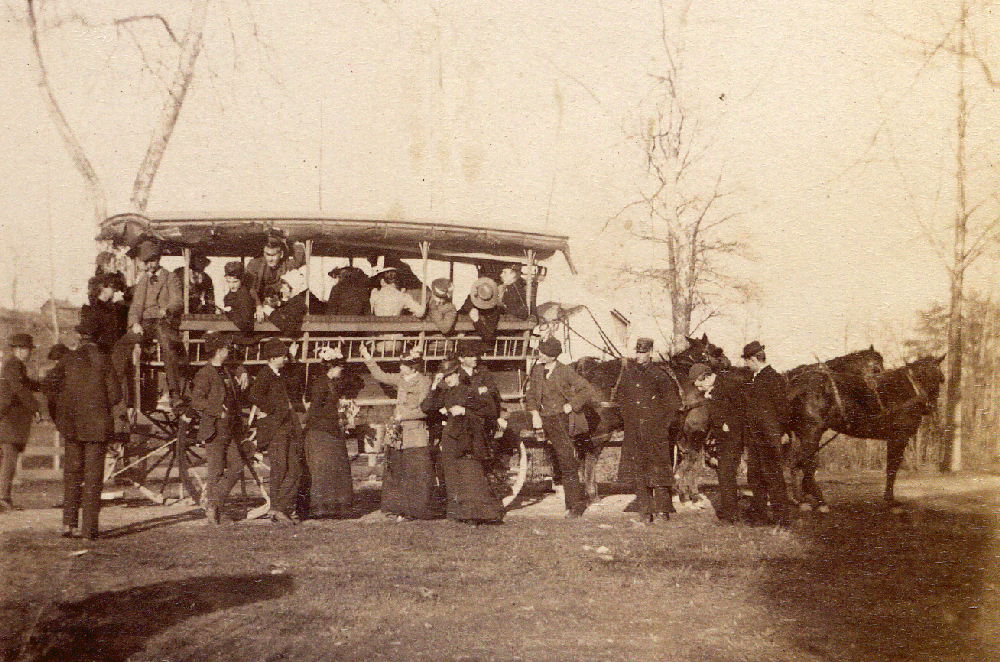
A tour coach heading to Cabin John, and then on to Great Falls
The Cabin John Bridge Hotel
Realizing that the Cabin John Bridge would attract tourists and that they would need to eat, Joseph and Rosa bought a tract of land next to the bridge on the river side of Conduit Road (now MacArthur Boulevard) in 1870. They built a modest hotel in a german country style. The heart of the hotel was Rosa'a kitchen where she prepared meals of Maryland Fried Chicken, Catfish, Black Bass and many others. The hotel was a great success
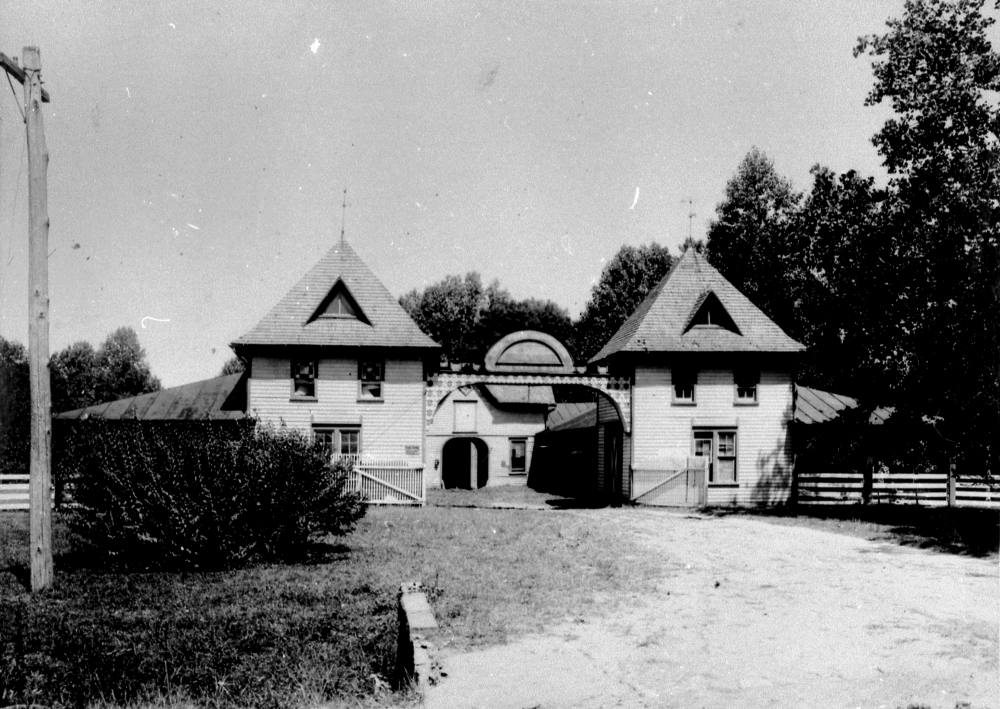
The Cabin John Hotel stables. Photo taken about 1910
The Cabin John Bridge Hotel
Visitors would drive their carriages out to see what was then the longest single span stone arch in the world. The ride from Washington took about 1-1/2 hours in a carriage, a bit longer on a tour coach. After the long drive and time to see the bridge the visitors would go to the hotel for a meal or at least a drink before the long trip back; some would stay the night.
The Bobingers built a large stable complex to care for the visitor's horses and to keep their carriages out of the rain. The stables were directly across the Conduit Road from the hotel, along with other necessary out-buildings.
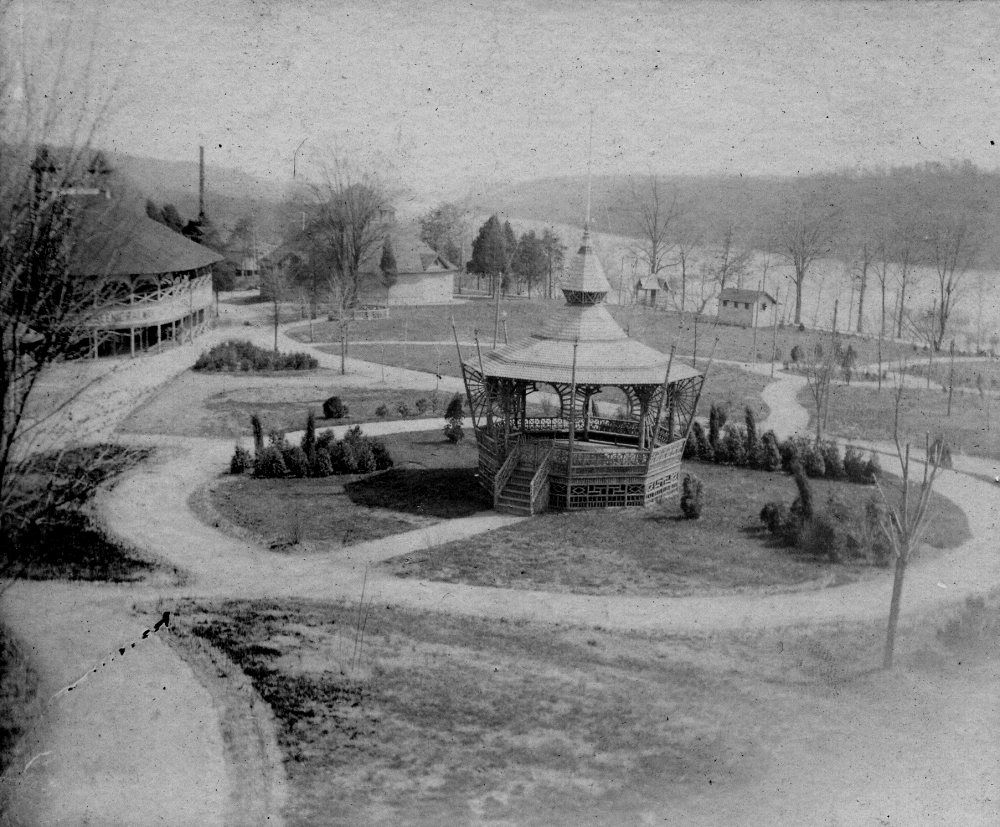
A gazebo on the hotel grounds. Behind the gazebo are the scenic railway and carrousel building of the amusement park run periodically on the hotel grounds as a concession
The Cabin John Bridge Hotel
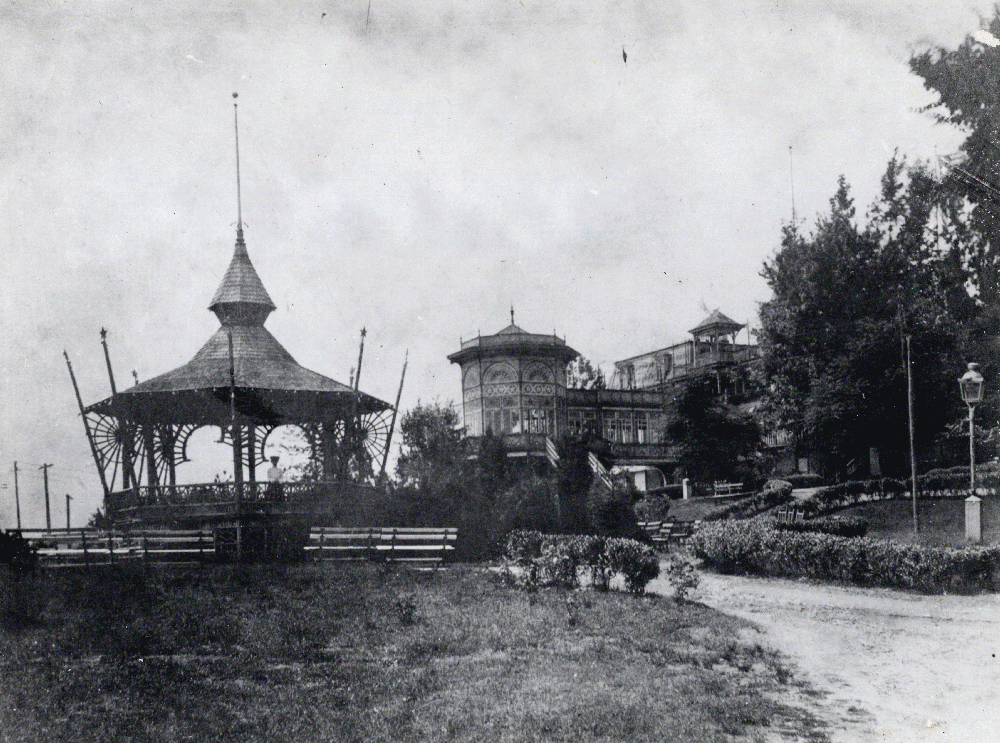
Looking back at the hotel from near the creek valley, the Orchestron is seen in the distance
The Cabin John Bridge Hotel
The hotel grounds we extensively gardened, with winding pathways around the hotel and down into the creek valley. Around 1901 the Bobingers hired a local carpenter to construct rustic, cedar, gazebos at strategic scenic spots on the grounds.
Most ot the gazebos were simple wooden platforms with wildly ornate roofs, but at least one had two floors, one above the other. Meals could be served in the gazebos, though not on the lawns as southern propriety forbad eating in uncovered areas.

An ornate cedar gazebo in front of the cast-iron footbridge
The Cabin John Bridge Hotel
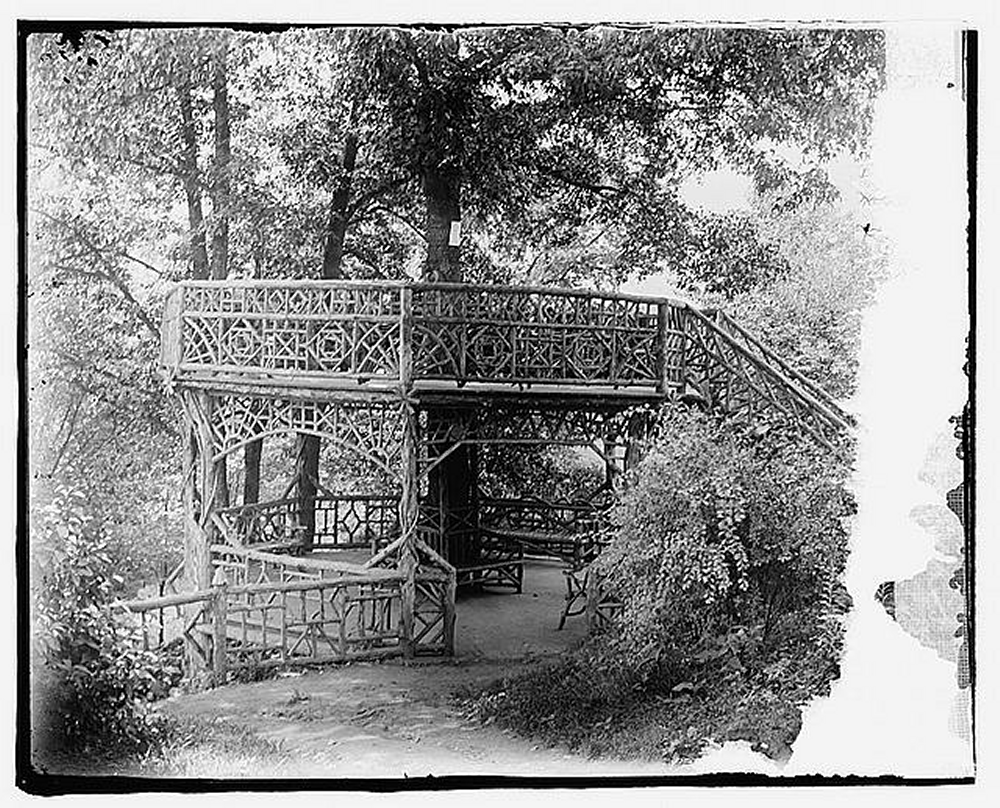
A two-story gazebo near the hotel, southern sensibilities forbade eating on the upper deck
The Cabin John Bridge Hotel
The Bobingers had a cast iron footbridge constructed over the creek parallel to the Cabin John Bridge. The footbridge connected the hotel grounds to a station on the trolley line that ran to the Cabin John Bridge from Georgetown in Washington D.C. The footbridge can be seen behind the gazebo seen to the left.

Bill for a large group at the hotel in 1903, take a look at the foods listed!
The Cabin John Bridge Hotel

A bill featuring the ornate letterhead created by the bobinger Brothers, showing thier ubiquitous 'BB' monogram.
The Cabin John Bridge Hotel
Meals at the hotel could be simple or intricate, the bill to the left shows the menu for a group of 24 people having dinner at the hotel, with a multi-course meal costing around $4.35 per person (at a time the average worker earned $15.00-$20.00 per week. The right-hand image is a bill for simple meals for two trolley line employees at $1.00 each. Both bills are from 1903.
The Bobingers employed many Cabin John residents as groundskeepers, waiters, laundresses, busboys, stable-hands, and all the other tasks related to running a hotel. After the trolley line reached the Cabin John Bridge in 1896, the Bobingers hired additional help from the city.
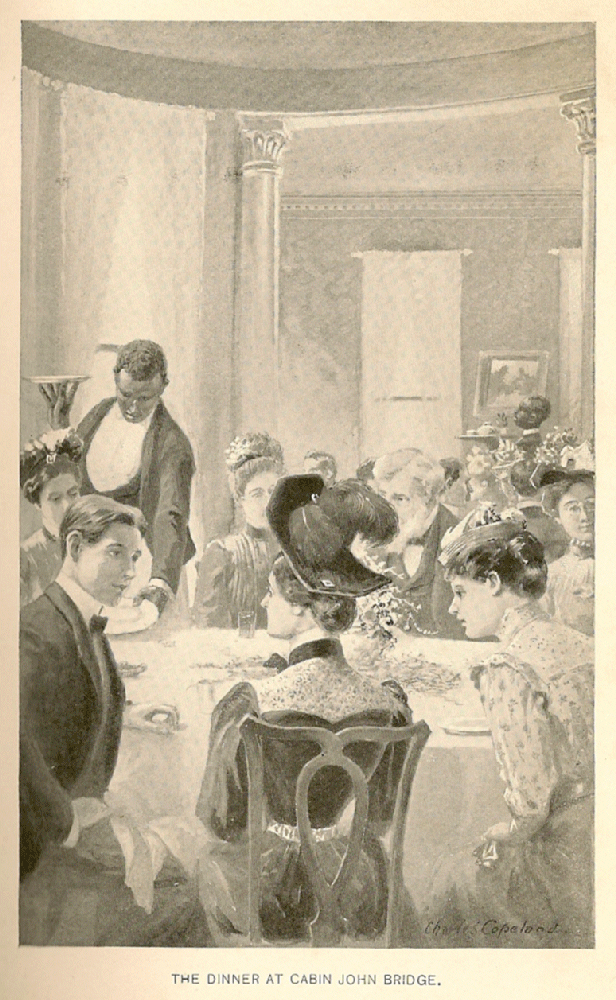
No photos of diners are known, but this contemporary painting shows a lavish meal at the hotel
The Cabin John Bridge Hotel
A dinner at the hotel was no small thing to do. Nearly all the diners came from the city, until 1896 the only transportation to the hotel was by horse or carriage, taking about 1-1/2 hours each way. Add to this a many course meal and a stroll around the grounds and a trip down the valley to see the bridge at its best vantage point and you are talking about a 7 or 8 hour committment.
The Meals were apparently worth the trip as Cabin John became one of the "must-see" tourist spots for all D.C. tourists.
Between the hotel's opening in 1870 and the turn of the century, much had changed. Joseph Bobinger died suddenly in 1881, leaving Rosa with two sons to raise and a business to run. Around 1890, Rosa took her sons into business with her as 'Rosa Bobinger & Sons'. Rosa passed away in 1893, leaving her sons, William and George, to run the hotel.
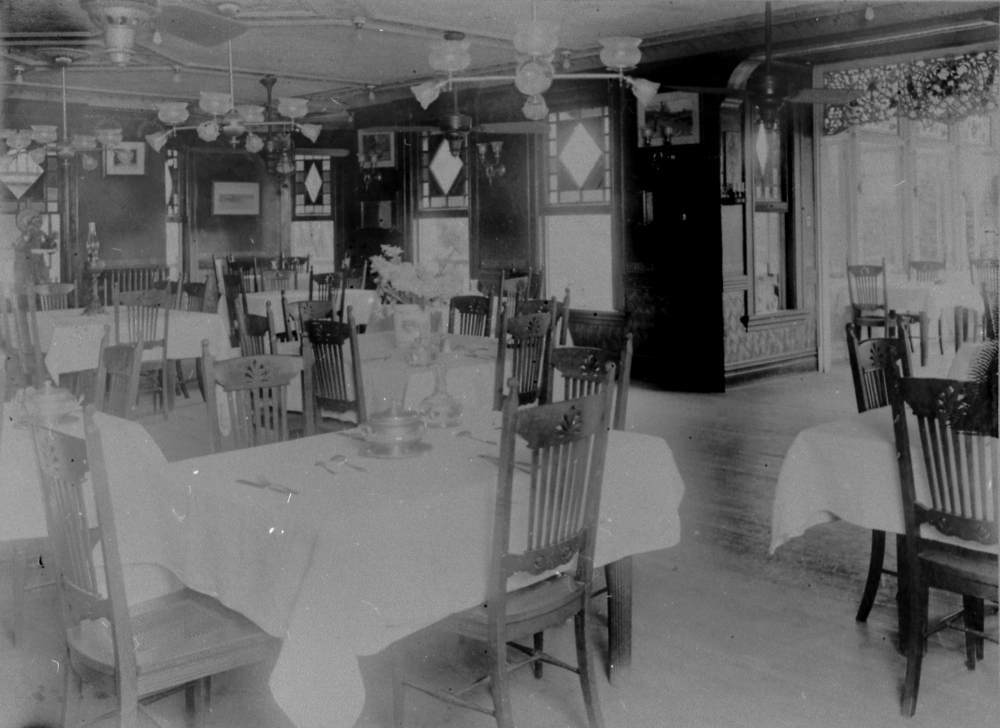
The largest of the dining rooms at the hotel, note the ornate archway to the right of the photo, it can be seen in the next photo as well
The Cabin John Bridge Hotel
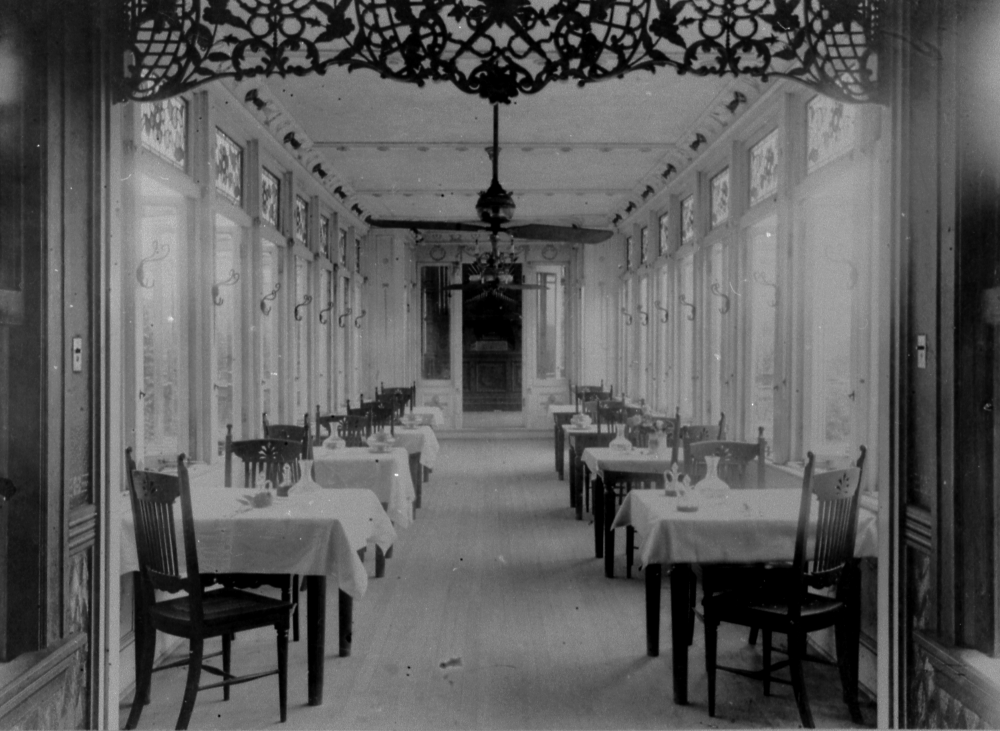
The stained-glass hall, leading to the Orchestron. This was a favorite place to dine as you could see the beautiful grounds while you ate
The Cabin John Bridge Hotel
The Bobinger Brothers shortly began major renovations, furnishings in the many dining rooms were updated. Several new dining rooms were added, including one inside a glass walled corridor that led to the great Orchestron, a huge mechanical musical device which could be heard over a mile away.
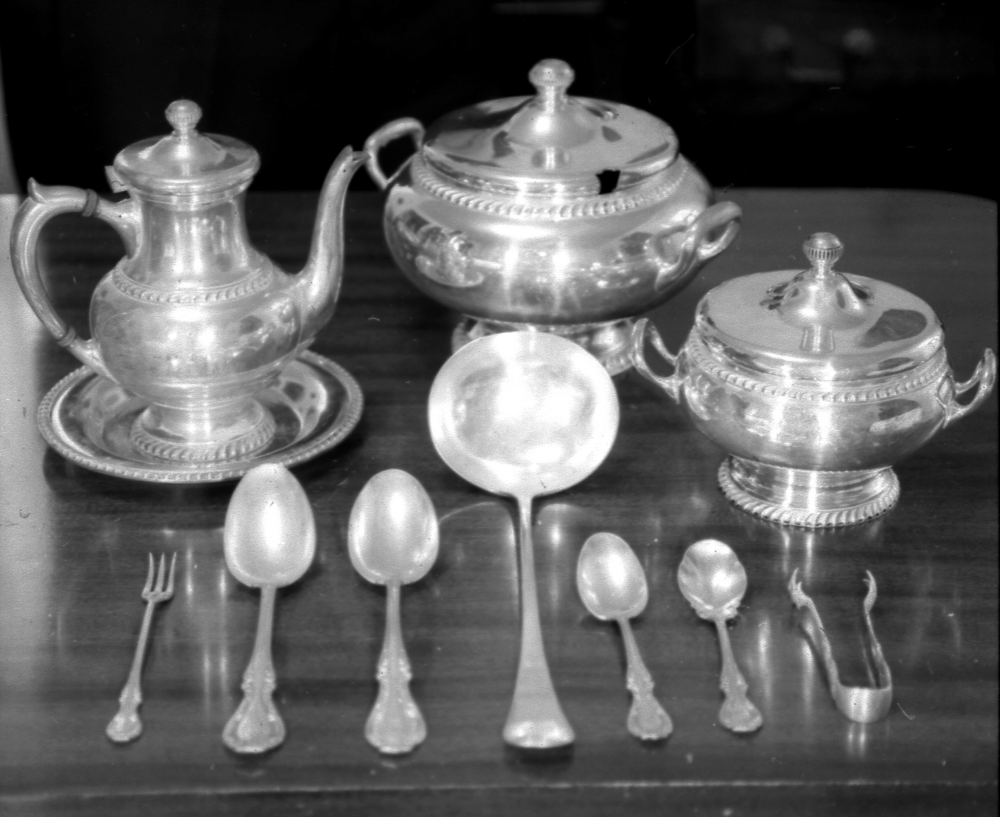
Silver plate hollowware and serving pieces from the hotel. The hollowware had the 'BB' monogram on it, the serving pieces were unmarked
The Cabin John Bridge Hotel
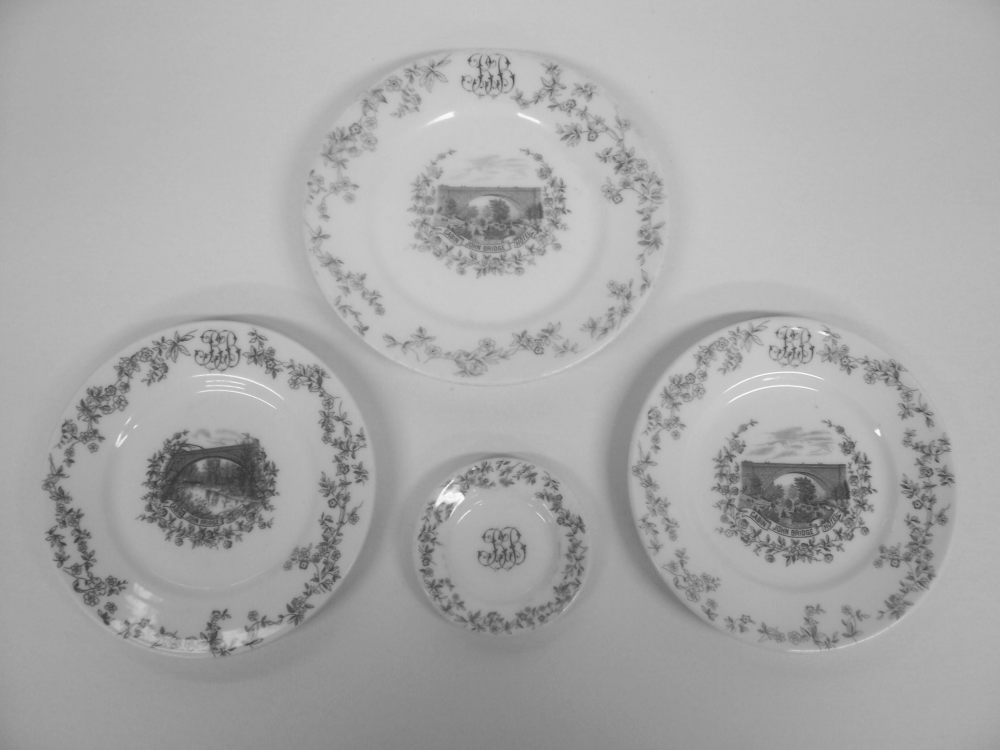
Several plates from the hotel, each with the 'BB' monogram, the smallest is a butter-pat plate about 3" across
The Cabin John Bridge Hotel
The dining rooms were decked out rooms with sumptuous new china and crystal. The brothers bought crystal wine glasses from Alsace, they had clear bowls with green stems for white wine and red stems for red wine. Their new china featured a 'BB' monogram for Bobinger Brothers, and a view of the famous bridge. They replaced the old serving pieces with a new design including the 'BB' monogram where the old pieces had simply been engraved 'Cabin John Hotel'.
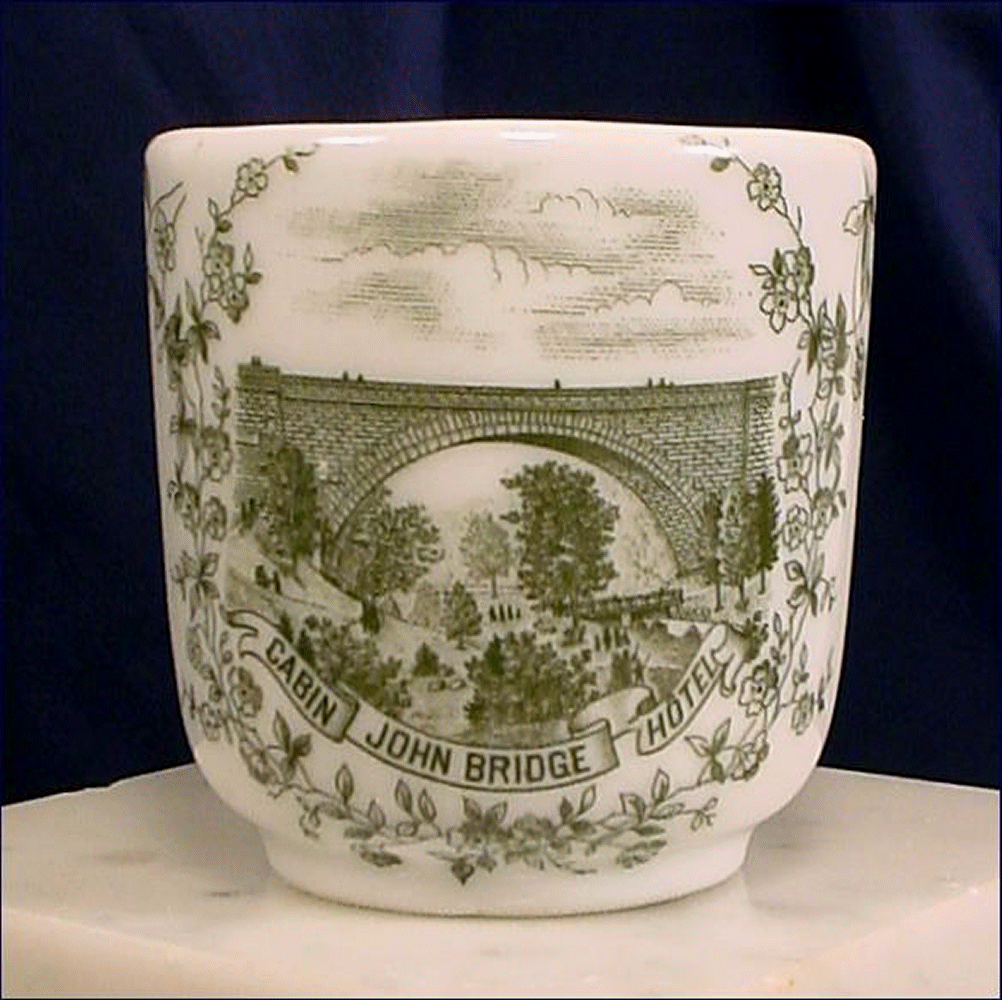
A demitasse cup from the hotel showing the Cabin John Bridge decoration.
The Cabin John Bridge Hotel
Sometime around 1900, the hotel stopped letting out rooms, the reason for this is not known. The brothers had young childern at the time and as they lived in the hotel, they might not have wanted that environment for their young ones.
The basement area of the hotel housed a rathskeller, a beer hall, for working men. The rathskeller had rows of slot machines and a reputation of roughness. In the 1910's there were many times the sheriff came to the hotel to investigate reports of violence, including a murder. The hotel's existance was somewhat of an oddity as Montgomery County had been a dry county since 1881. For decades, the hotel's alcohol sales were ignored by law enforcement. They mainly sold wine in the resaruant which created few problems, but after the rathskeller opened the brothers were arrested many times for violating the county alcohol laws.

Back side of a flier promoting the hotel, the Bobingers never missed an advertising oportunity
The Cabin John Bridge Hotel
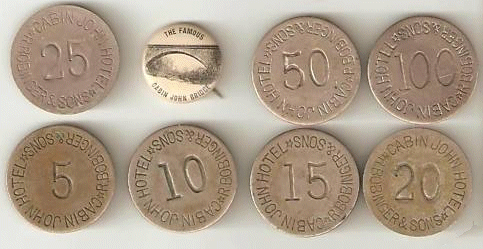
A selection of Cabin John Hotel tokens along with a pinback button featuring the bridge
The Cabin John Bridge Hotel
The Bobingers were natural born salesman, they used the latest methods to promote the hotel. A telephone was installed early and you could call ahead to have your meal ready if you were in a hurry. They sold souvenirs of the bridge, mainly photos, but always placed an ad on the back promoting the hotel.
Tokens (see inage to right) were given either as promotions, or perhaps in change to regulars. Other souvenirs included pinback buttons and stereoviews of the bridge.
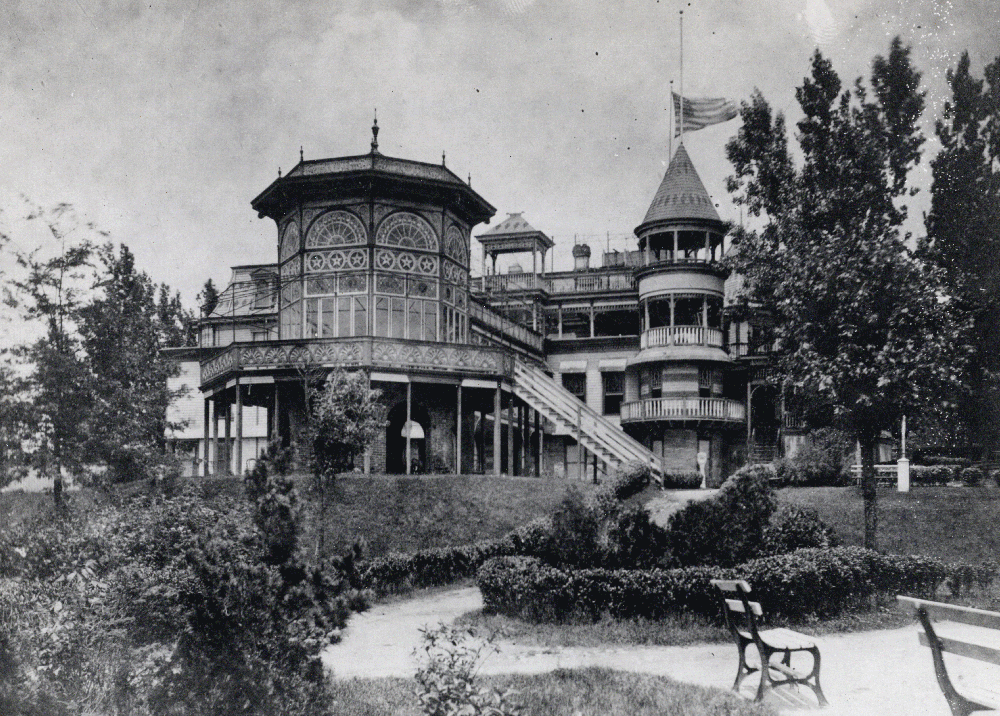
The ornate back of the Cabin John Bridge Hotel
The Cabin John Bridge Hotel
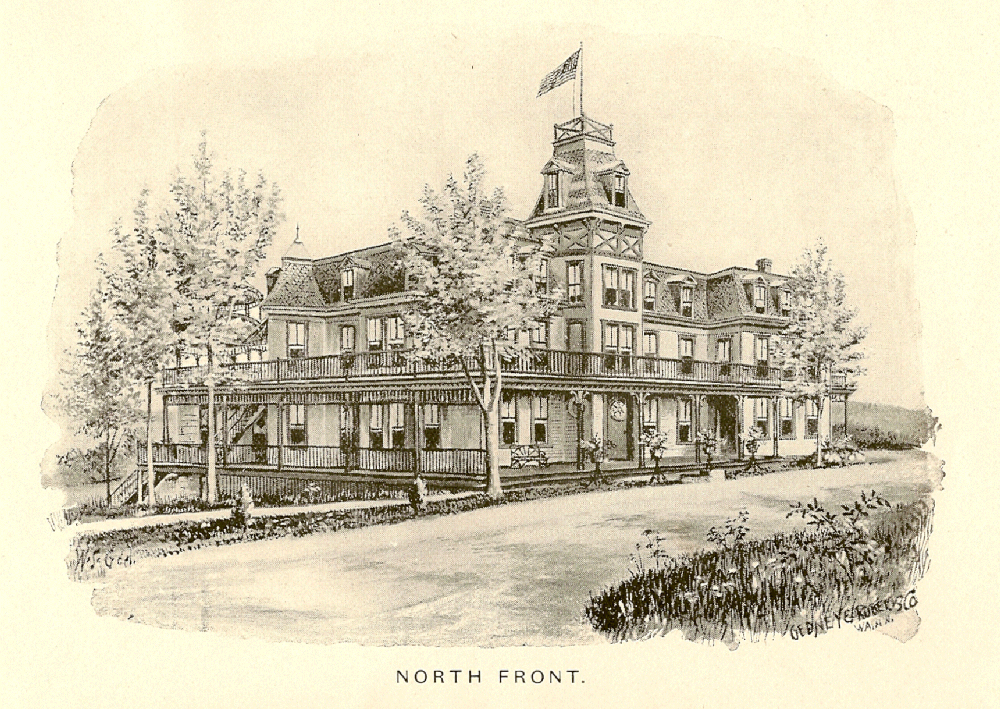
The simple 'country hotel' look of the Cabin John Hotel front
The Cabin John Bridge Hotel
The front and back of the hotel were unusually different. The front (seen to the right) looked like a simple German country hotel, whike the back was like a fairyland with towers and turrets. The Orchestron (seen to the left) was imported from Germany and was housed in a cylindrical stained-glass enclosure.
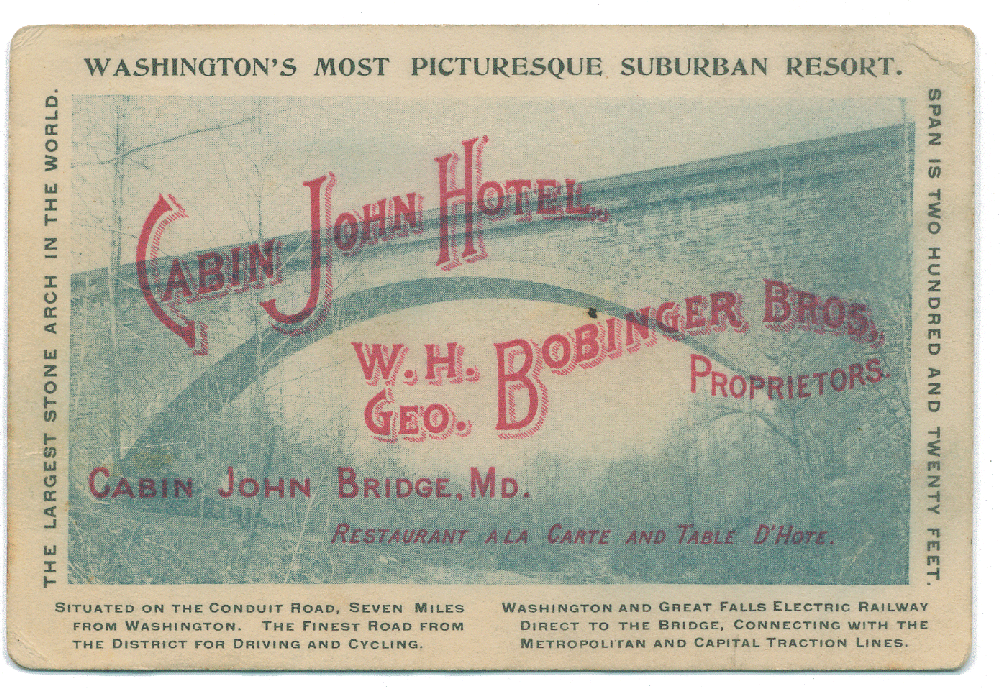
An 1897 business card from the hotel, the guest who owned this card wrote his hotel expenses on the back
The Cabin John Bridge Hotel
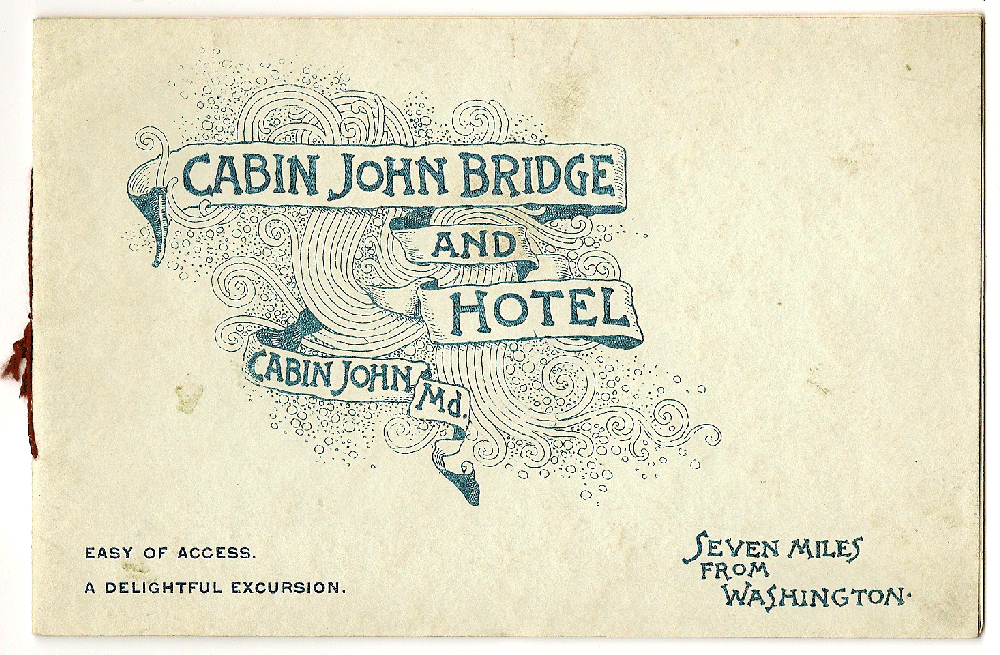
An 1893 promotional brochere from the hotel.
The Cabin John Bridge Hotel
The hotel was run by William Bobinger after his brother George's death. Continued enforcement of alcohol laws and a general downturn in business finally made William consider closing the hotel. He negociated with several people to lease the hotel and was reported to have done so in the newspapers. The hotel kind of fizzled out and finally closed in the late 1920's
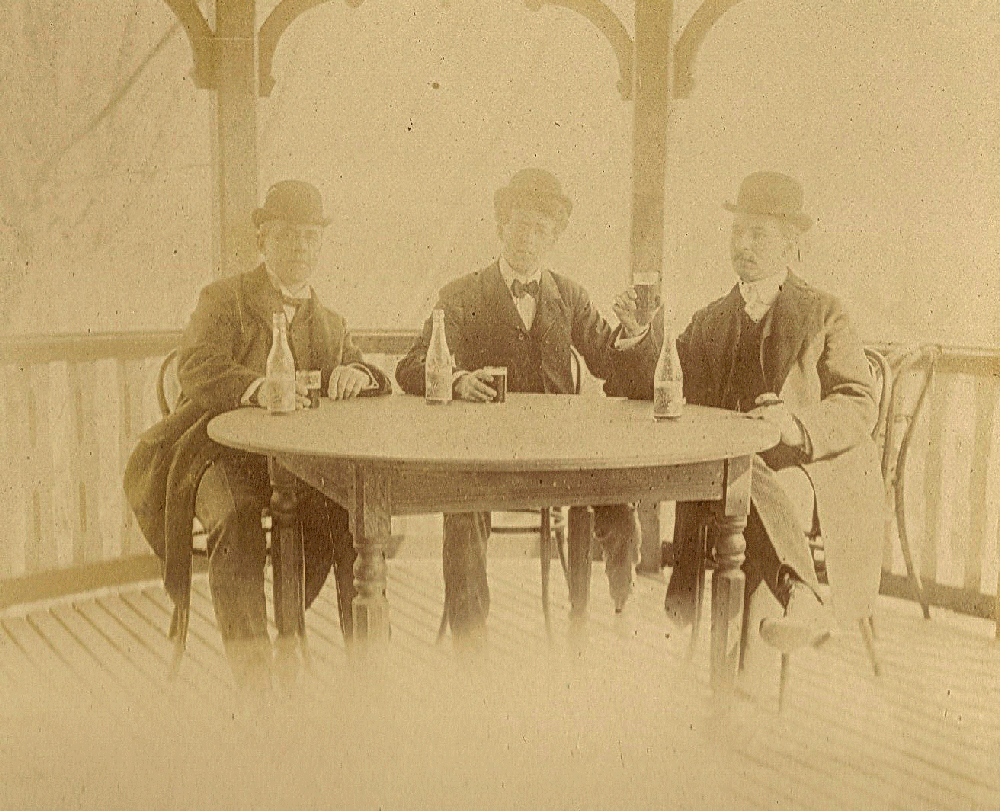
A limburger sandwich, a glass of cold beer, a slice of raw onion, and you!
The Cabin John Bridge Hotel
The days of drinking a cold beer in a gazebo at the Cabin John Hotel were gone forever.
|
|




